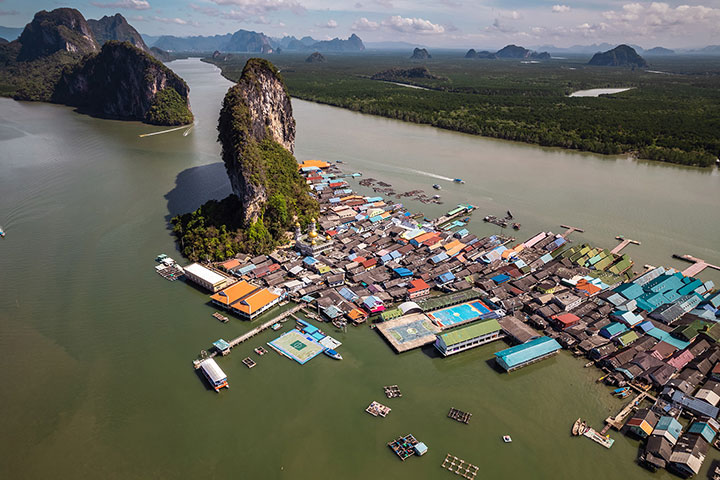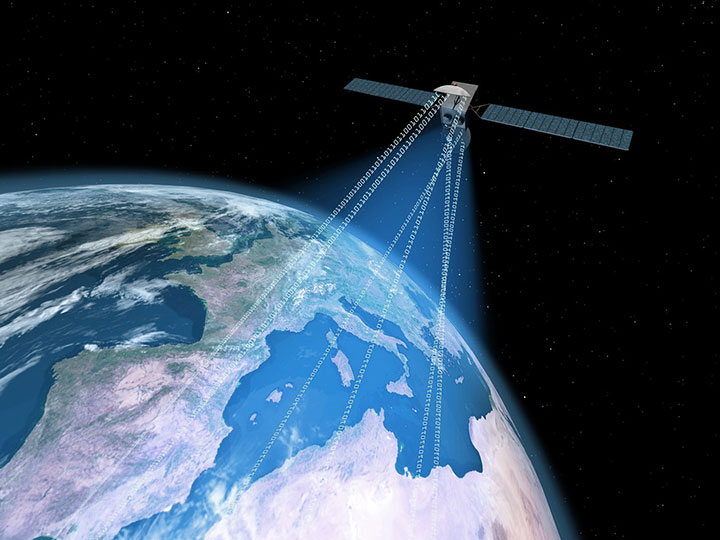
Constellations spoke with Christian Patouraux, CEO and Founder, Kacific about delivering low-cost satellite broadband to connect and change the lives of the underserved and vulnerable in some of the most difficult to reach areas of the Asia Pacific.
In a region known as the Ring of Fire, which includes Indonesia, Singapore and the Philippines, communities in remote areas outside of cities have been largely cut off from connectivity. Terrestrial fiber and microwave have been no match for the mountainous terrain, expanses of water between islands and large distances between activity centers.
Before the launch of Kacific’s first satellite in 2020, millions in a region beset by earthquakes, tsunamis and typhoons had little or no access to the internet.
Using broadband satellite technology to penetrate the terrain, small beams of high-powered connectivity pinpoint the areas of need. The network connects isolated communities with two-way communications and internet to improve productivity, education, and healthcare.
Today, Kacific’s 56 spot beams serve 25 countries and 600 million people to help close the digital divide.

The Ingredients
Patouraux said closing the digital divide must be in the DNA of the company, and that the entire business must be built and streamlined around solving that particular challenge. That includes having the right business model and using technology that can deliver service at a low enough cost to be affordable.
A key requirement for their network, he added, was throughput, with the ability to push through and repeat a large amount of bandwidth to reach the volume and price points needed.
“That’s the beauty of a high-throughput satellite,” he said. “You have a high degree of frequency reuse that’s essentially like a cellular network from space.”
He added, “You pinpoint those various beams at various pockets of demands and that’s how the satellite works and that’s how it competes with all the terrestrial systems.”
While not intended for the large cities, Patouraux said satellite is an effective backup in the case of disasters. Such a system has to deliver consistent quality of service to all parts of a large country, like Indonesia. That requires a ground system to match the power and throughput of the satellite, that could absorb bandwidth with the same availability and quality.
Kacific also looked to de-risk the project as much as possible, from the antennas and network systems to the locations of the teleports.
The antenna system, for example, needed to be highly accurate and stable to deliver the performance for a delicate, very high frequency system.
Selecting locations that could serve as homes for teleports for the next 15 years was also a challenge. It required an environment that could be well connected, provide resilience and where the weather would help.
“You can’t pick a rainy location,” Patouraux said.
Except that they did.
“A lot of people laughed at me when I tried to set up the first Ka band system in Southeast Asia, which is notoriously rainy.”
Despite looking for somewhat dry areas, the workaround was to use site diversity to toggle between teleports when rain hit one. Using a system that digitizes and pushes the traffic through fiber, Patouraux said they can seamlessly connect and switch between teleports located in Indonesia and the Philippines 60 to 70 miles apart.

The Benefits of Affordable Connectivity
Patouraux highlighted three “pillars” where reliable connectivity is benefitting the Asia Pacific communities. The first is economic development. Providing affordable bandwidth, as defined by the ITU, supports the prosperity and welfare for people to be more productive where they live.
The second pillar is education. Currently, Kacific is connecting 3,000 educational institutions in rural areas and the outskirts of cities, from elementary and primary schools up to tertiary education.
“When people are being better educated in the regional, rural areas where they live, that fosters a better societal fiber.”
The third and most important pillar he pointed to is healthcare, as Kacific is connecting approximately 1,000 healthcare institutions, dispensaries, clinics, all the way to larger hospitals. This connectivity helps save lives, whether to call for medevac for critical cases, assist difficult births or to stabilize the injured.
Fast Forward
With the world deeply changed by Covid over the last three years, and demand for connectivity accelerating, Patouraux said executives and government leaders realize that connectivity is essential for running their countries.
Because connectivity cuts across so many issues of the world, from healthcare all the way to disasters, he said the rural and remote areas can’t be left alone and need to be brought into the fold.
To hear more about unique challenges of connecting communities in need, from working with local populations and leveraging the latest satellite technology to adapting the business, click here.
Explore More:
Asia Pacific Satellite Operators Compare Multi-Orbit Strategies, Weigh in on Starlink Competition
Indonesia Broadband Demand Already Exceeding PSN Satellites
Podcast: Future of Satellite Connectivity, New Satellite Applications and Other Key 2023 Space Trends
Crowded Spectrum Pushing Satcom Operators into Q/V Bands
